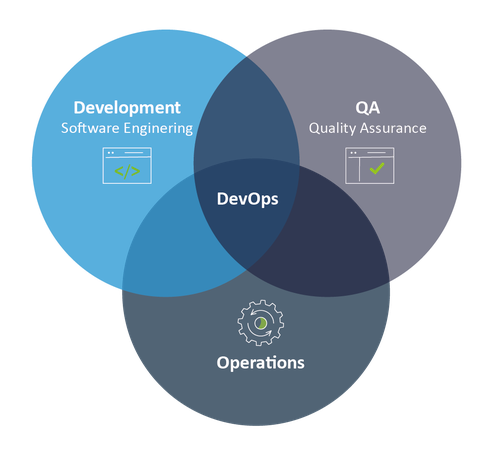Libelle IT Glossary Part 22: What is DevOps?
Process optimization is an important goal for companies. The lean manufacturing approach describes continuous process optimization and encompasses an efficient design of the entire corporate value chain. In this process, all processes and activities are coordinated with each other so that no waste can occur. The goal is to have "lean management" and standardized processes.
The DevOps approach focuses on aligning people, processes, and tools to improve the collaboration and communication between development and operations teams. It aims to eliminate silos and enhance the responsiveness of application and service development.
In this context, DevOps represents a holistic approach to IT provisioning. The goal is to ensure responsive application and service development by different teams through this approach.
One of the biggest benefits is obvious! Companies can respond to market needs at lightning speed, and do so ahead of the competition. (Source)
DevOps Definition
"Dev" (development) and "Ops" (operations), DevOps is made up of these two terms. The aim is to bridge the gap between software development and IT operations. The DevOps concept is the efficient integration of software development, quality assurance and IT operations; these three areas are directly linked with each other. Together, better and more reliable products can be realized.

DevOps culture
Fixed components of the DevOps culture are:
- Collaboration, visibility, alignment.
- Changed responsibilities and accountabilities
- Shorter release cycles
- Continuous learning
The following explains these in more detail. (Source)
Collaboration, visibility, alignment
The focus of a good DevOps culture is collaboration between teams. This is primarily about visibility. All the different teams, e.g. for development and IT operations, need to be in direct communication about their processes, priorities and responsibilities on DevOps. The planning of their collaboration, as well as their business goals and success criteria, must be well aligned.
Changed responsibilities and accountabilities
Close coordination of the teams is particularly important in order to be able to accurately plan the responsibilities of the teams across the product lifecycle phases. The basis for this is the individual roles of the team members, yet additional tasks are often taken on. For example, developers are responsible not only for innovation and quality assurance in the development phase, but also for the performance and stability that changes bring in the execution phase. At the same time, IT professionals must ensure governance, security and compliance in the planning and development phases.
Shorter release cycles
Cue agility: an important part within a DevOps team is staying agile to, among other things, release software in short cycles. Shorter release cycles also make planning and risk management easier. There can be a quick response to changing customer needs and competitive pressures.
Continuous learning
Teams that follow DevOps principles think growth-oriented and are high-performing. They work according to the fail-fast principle and integrate experience into their processes. A healthy error culture is important here; it creates the basis of continuous improvement, higher customer satisfaction, a high pace of innovation and rapid adaptation to the market. DevOps is a continuous journey, so there is always room for growth.
What are the benefits of DevOps?
Companies that implement the DevOps culture in their teams are particularly powerful and develop better products in less time, which usually leads to more satisfied customers.
The following business goals can be pushed by the improved collaboration and productivity:
- Shorter time-to-market
- Adaptation to the market and competitive situation
- Maintaining stability and reliability of systems
- Improving MTTR (Mean Time To Recover)
Do you work in IT or are you interested in IT-related topics? Then feel free to visit our blog for more topics and follow us on LinkedIn.
Recommended articles
All blog articles